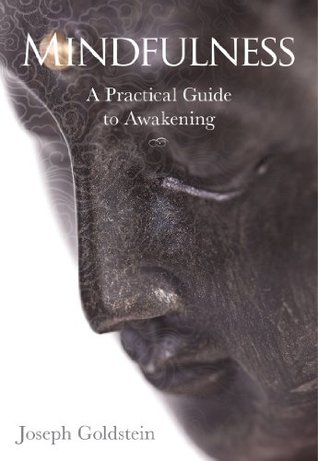More on this book
Community
Kindle Notes & Highlights
The Buddha first points out the four fields, or pastures, for establishing mindfulness: body, feelings, mind, and dhammas (categories of experience).
When we’re not mindful, not aware, then we often get lost in unwholesome reactions, creating suffering for ourselves and others.
Ardent implies a balanced and sustained application of effort. But ardent also suggests warmth of feeling, a passionate and strong enthusiasm or devotion because we realize the value and importance of something.
Dilgo Khyentse Rinpoche, one of the great Tibetan Dzogchen masters of the last century, reminded us of this: Ask yourself how many of the billions of inhabitants of this planet have any idea of how rare it is to have been born as a human being. How many of those who understand the rarity of human birth ever think of using that chance to practice the Dharma? How many of those who think of practice actually do? How many of those who start continue? . . . But once you see the unique opportunity that human life can bring, you will definitely direct all your energy into reaping its true worth by
...more
We can also strengthen the quality of ardor by reflecting on the transiency of all phenomena.
Among all the activities of sāṃsara, There is not one that is lasting. Whatever is born will die; Whatever is joined will come apart; Whatever is gathered will disperse; Whatever is high will fall. Having considered this, I resolve not to be attached To these lush meadows, Even now, in the full glory of my display, Even as my petals unfold in splendor . . .
the law of karma. This is the fundamental and essential understanding that all of our volitional actions—of body, speech, and mind — bear fruit depending on the motivation associated with them.
On a boat in the middle of a great storm, one wise, calm person can bring everyone to safety. The world is like that boat, tossed by the storms of greed and hatred and fear. Can we be one of those people who help to keep it safe?
Mindfulness in this aspect is the quality of bare attention, of noninterfering awareness, which we’re familiar with from our enjoyment of music. When we’re listening to the music, our minds are open and attentive, not attempting to control what comes next, not reflecting on the notes just past.
Mindfulness also works to balance what the Buddha called “the five spiritual faculties”: faith, energy, mindfulness, concentration, and wisdom.
There is a state called “pseudo-nirvāna.” This is when our insight is developing, but in our enthusiasm we forget to be mindful, and then, because of our attachment to these very states, they become corruptions of insight.
Ajahn Sumedho, one of the senior Western monks of the Thai Forest tradition, quite aptly pointed out that, contrary to some popular beliefs, our aim should be not to follow the heart but to train the heart.
When my first Dharma teacher, Munindra-ji, first visited America, he was struck with how people wanted to meditate and get enlightened, but seemed less concerned with this foundation of morality. He said that it is like trying to row a boat across a river, exerting a lot of effort in the process, but never untying the rope from the dock. It doesn’t go anywhere.
Ajahn Chaa, A Taste of Freedom (Ubolrajadhani, Thailand: The Sangha Bung Wai Forest Monastery, 1991). Ebook available through the eBook Library at BuddhaNet: Buddhist Education and Information Network (buddhanet.net), website of the Buddha Dharma Education Association Inc.


